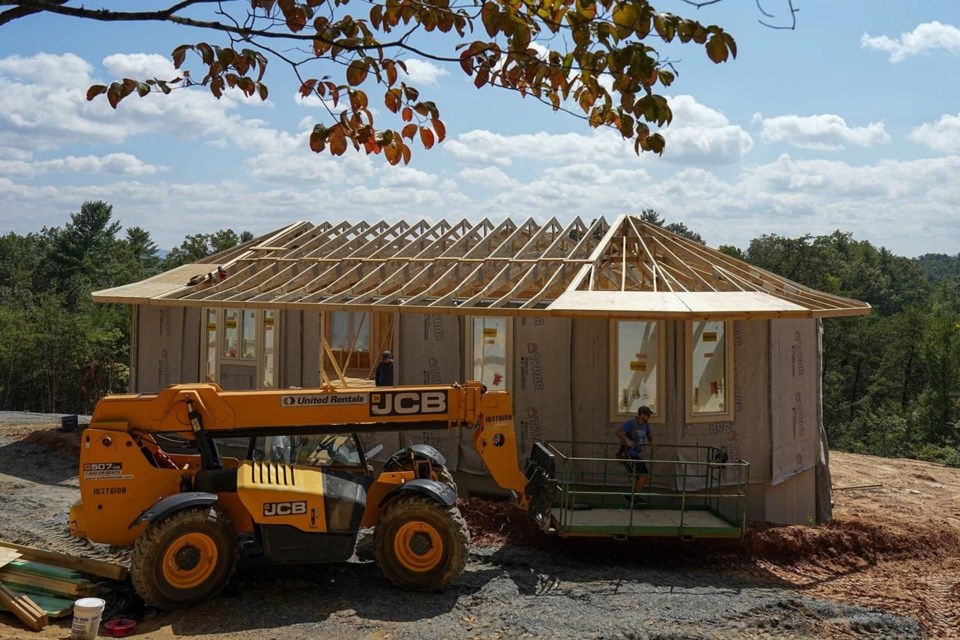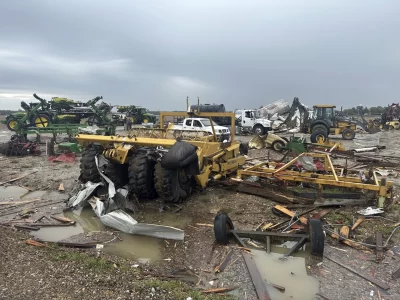
When Hurricane Michael hit the Florida Panhandle five years ago, it left boats, cars and trucks piled up to the windows of Bonny Paulson’s home in the tiny coastal community of Mexico Beach, Florida, even though the house rests on pillars 14 feet above the ground. But Paulson’s home, with a rounded shape that looks something like a ship, shrugged off Category 5 winds that might otherwise have collapsed it.
“I wasn’t nervous at all,” Paulson said, recalling the warning to evacuate. Her house lost only a few shingles, with photos taken after the storm showing it standing whole amid the wreckage of almost all the surrounding homes.
Some developers are building homes like Paulson’s with an eye toward making them more resilient to the extreme weather that’s increasing with climate change, and friendlier to the environment at the same time. Solar panels, for example, installed so snugly that high winds can’t get underneath them, mean clean power that can survive a storm. Preserved wetlands and native vegetation that trap carbon in the ground and reduce flooding vulnerability, too. Recycled or advanced construction materials that reduce energy use as well as the need to make new material.
A person’s home is one of the biggest ways they can reduce their individual carbon footprint. Buildings release about 38% of all energy-related greenhouse gas emissions each year. Some of the carbon pollution comes from powering things like lights and air conditioners and some of it from making the construction materials, like concrete and steel.
Deltec, the company that built Paulson’s home, says that only one of the nearly 1,400 homes it’s built over the last three decades has suffered structural damage from hurricane-force winds. But the company puts as much emphasis on building green, with higher-quality insulation that reduces the need for air conditioning, heat pumps for more efficient heating and cooling, energy-efficient appliances, and of course solar.
Other companies are developing entire neighborhoods that are both resistant to hurricanes and contribute less than average to climate change.
Pearl Homes’ Mirabella community in Bradenton, Florida, consists of 160 houses that are all LEED-certified platinum, the highest level of one of the most-used green building rating systems.
To reduce vulnerability to flooding, home sites are raised 3 feet above code. Roads are raised, too, and designed to direct accumulating rainfall away and onto ground where it may be absorbed. Steel roofs with seams allow solar panels to be attached so closely it’s difficult for high winds to get under them, and the homes have batteries that kick in when power is knocked out.
Pearl Homes CEO Marshall Gobuty said his team approached the University of Central Florida with a plan to build a community that doesn’t contribute to climate change. “I wanted them to be not just sustainable, but resilient, I wanted them to be so unlike everything else that goes on in Florida,” Gobuty said. “I see homes that are newly built, half a mile away, that are underwater … we are in a crisis with how the weather is changing.”
That resonates with Paulson, in Mexico Beach, who said she didn’t want to “live day to day worried about tracking something in the Atlantic.” Besides greater peace of mind, she says, she’s now enjoying energy costs of about $32 per month, far below the roughly $250 she said she paid in a previous home.
“I don’t really feel that the population is taking into effect the environmental catastrophes, and adjusting for it,” she said. “We’re building the same old stuff that got blown away.”
Babcock Ranch is another sustainable, hurricane-resilient community in South Florida. It calls itself the first solar-powered town in the U.S., generating 150 megawatts of electricity with 680,000 panels on 870 acres. The community was also one of the first in the country to have large batteries on site to store extra solar power to use at night or when the power is out.







